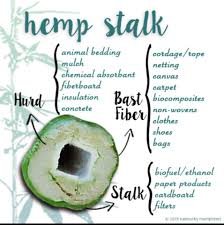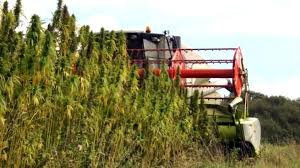The numerous uses and benefits of the amazing hemp plant
The products that can be manufactured from the incredibly versatile hemp plant, is conservatively estimated at over 25,000. The absolutely huge global marketing potential is only just starting to be recognised and understood. New Zealand hemp has the potential to emulate that what has been done for the kiwifruit or wine industries. New Zealand needs a more diversified industry base and hemp can provide that.
The variety of uses this amazing plant’s fibres have been applied, throughout history, include :
Textiles, Fabrics, Clothing, Yarn, Rugs, Rope, Sails, Bags and Canvas.
Some of the wide range of industries that use hemp include :
- Textiles and the Paper Industry
- Building and insulation Companies
- Horticultural Industry
- Stock and Animal Nutrition Markets
- Food and Beverage Industry
- Medicine and Nutraceuticals Markets
- Cosmetics and Hygiene Industries
- Energy and the Environment
Hemp Stalk Explained
The stalk of the hemp plant consist of two layers :
- Outer Layer – this consists of a rope-like bast fibre
- Inner Layer – this is the woody inner parts of the hemp stalk.
Each of the layers from this dynamic plant, can be used to create many varied products as shown :

Common Applications
Medical and Cosmetic
There are now many products on shelves globally that attest to the benefits people are receiving from this giving plant. CBD oil is one of the most versatile products you can get from the plant, and there are now various successful medical companies and skincare brands that have built products around this very oil.
Textiles and Clothes
Hemp fabric has a deep history going back to at least 8000BC, which has been confirmed from hemp cloth remnants being found by archeologists in the Iran/Iraq area.
This is thought to be the the oldest examples showing human industry!
Hemp textiles can be cheaper than most organic textiles and a lot more ecologically sustainable than the artificial and chemically synthesised textiles.
Building Materials
Hemp grows much faster than trees, and farmers can normally expect two harvest per year, as opposed to forest plantations that mature in decades. For insulation purposes it is a far superior material than other manufactured solutions. Hempcrete, made from mulched hemp hurd, then mixed with a lime binding agent, weighs approximately 1/7th the weight of concrete and is ideal as an insulation material. It can be moulded into bricks, panels or worked into walls and is fireproof and resists mould. However it is not as strong as concrete so is not suitable for structural load-bearing.
Food
Hemp is a complete food containing all nine amino acids and it can be consumed via the seeds, as a protein powder (ground seeds) as a pressed oil, or even as milk.
There is an increasing variety of hemp based products appearing on New Zealand shop and supermarket shelves, to cater for the growing demand. Consumers are fast becoming aware of the health benefits of this omega-rich food.
Paper Manufacture
The use of hemp paper is still only used in niche applications, and its production costs are much higher than that of paper. However there are considerable benefits which could see it start to gain traction in todays economy :
Hemp yields 3-4x more usable fibre per hectare than forests and a much faster crop maturity (4 months versus 20-80 years)
Hemp plants need no pesticides, herbicides and there is no toxic bleaching of the paper. Plus the paper is very durable.
Hemp paper can be recycled 8x compared to 3x for paper and it resists yellowing.
Hemp is a great tree substitute to reduce deforestation of old growth forests.
Ropes and Cords
Hemp fibre is amazingly strong, especially when compared to others, such as nylon. It does not degrade in sunlight, making it ideal for rugged outdoor use. Hence why it was used extensively in sailing ship rigging.
Biodiesel
Hemp biodiesel is made from hempseed oil and can be used in any conventional diesel engine. Biofuel popularity has been damaged by certain biofuel crops, such as palm oil. Biofuel uptake has also been strongly opposed by ‘big oil.’
With the world now facing much more pressing climate issues we should soon hear about exciting hemp biomass projects in the news.
Environmental Benefits
Hemp is a natural purifier – the plant captures CO2 at the rate of 1.6 tonnes per every 1 tonne of hemp. This is much more effective that that of trees!
Because of the incredible 4 month time to maturity, hemp is perfect for farmers to use in their crop rotation. Hemp is also a phytoremediative crop, meaning that it is very effective at regenerating the soil thanks to all the nutrients it contains. Hemp roots can grow nine feet deep, which aids in fixing damaged and nutrient-deficient soils.



